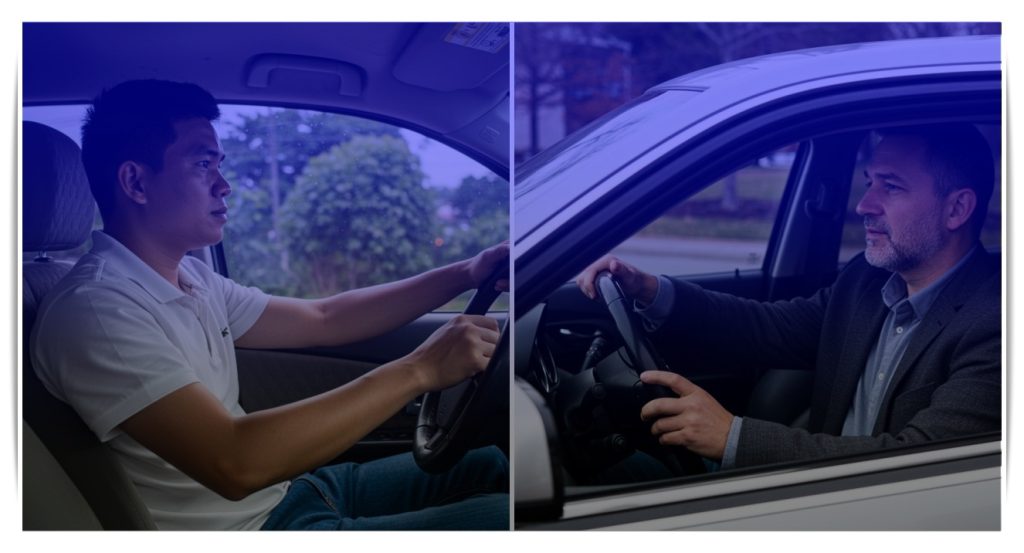Driving here isn’t just about getting from one place to another.
It’s a daily test of skill, patience, and adaptability.
Unlike in other countries, driving habits are shaped by culture, emotions, and road conditions.
Some drivers rely on instinct rather than strict adherence to rules.
Others navigate chaotic traffic with practiced ease.
Understanding these unique behaviors can help improve road safety.

1. The “Bahala Na” Mindset on the Road
“Bahala na” roughly translates to “whatever happens, happens.”
Many drivers take risks, trusting luck over caution.
Overtaking in tight spaces or ignoring signals is common.
This contrasts with places like Japan, where precision and discipline define driving.
While instinctive decision-making can be helpful, it can also lead to accidents.
Caution and responsibility should go hand in hand.
2. Emotional Driving: A Daily Reality
Driving is an emotional experience for many.
Frustration, stress, and excitement often dictate behavior on the road.
Studies show that emotions heavily influence driving performance.
In some countries, drivers rely on logic over feelings.
Here, a bad day can translate into aggressive driving.
Managing emotions behind the wheel can prevent unnecessary risks.
3. Social Driving vs. Independent Driving
Driving here is rarely a solo experience.
It’s common to have passengers helping with navigation or decision-making.
Conversations in the car influence how drivers react to situations.
In contrast, Western countries encourage independent driving.
Many people drive alone, relying solely on traffic rules and signs.
This social approach affects how people interact on the road.
4. Traffic Laws: Rules or Suggestions?
Traffic laws exist, but their enforcement varies.
Many drivers see them as flexible rather than strict.
Counterflowing, sudden U-turns, and ignoring signals happen daily.
Meanwhile, places like Singapore strictly enforce every traffic rule.
Consistency in law enforcement could lead to safer roads.
Stronger penalties might encourage better compliance.
5. Road Conditions and Driving Styles
Potholes, sudden floods, and unclear road signs shape driving behavior.
Drivers must constantly adjust to unpredictable conditions.
Sudden lane shifts and cautious speeds are survival tactics.
In developed countries, well-maintained roads allow for smoother driving.
Better infrastructure here could lead to more disciplined habits.
6. Public Transport and Ride-Sharing Impact
Jeepneys, tricycles, and buses dominate the roads.
They create unpredictable traffic patterns for private vehicles.
Ride-sharing services help modernize transportation options.
Meanwhile, in cities like Tokyo, structured transit systems ease congestion.
More organized public transport could lead to better traffic flow.
7. Pedestrian and Cyclist Safety
Pedestrians often cross wherever they find an opening.
Few dedicated lanes exist for cyclists, making roads dangerous.
In places like Amsterdam, bicycles have priority on the road.
Safer walkways and cycling lanes could reduce accidents.
Simple infrastructure improvements could make a big difference.
8. Driving Etiquette and Road Behavior
Here, bigger vehicles often assert dominance.
Right of way depends on who moves first.
Honking is a common form of communication, unlike in Japan, where it’s rare.
In Western countries, strict lane discipline is followed.
More awareness of road courtesy could improve traffic conditions.
9. The Role of Patience in Local Driving
Traffic congestion is a daily reality.
Drivers learn to wait through long stops and slow-moving lanes.
In other countries, road discipline helps keep traffic flowing.
Here, adapting to the situation is part of the experience.
Finding ways to ease congestion could lessen daily stress.
10. Steps Towards Safer Roads
Improving road discipline starts with awareness and education.
Stronger law enforcement can encourage responsible driving.
Better road infrastructure could reduce accidents.
Public campaigns on defensive driving could help shift behaviors.
When roads are safer, everyone benefits.
Best Driving Practices from Other Countries
Learning from other countries can help improve road safety.
Here are some best practices that could make a difference:
- Strict Traffic Law Enforcement (Singapore): Heavy fines and strict monitoring encourage compliance.
- Driver Courtesy and Discipline (Japan): Signaling and patience make driving smoother and safer.
- Bike-Friendly Infrastructure (Netherlands): Dedicated bike lanes reduce road congestion and accidents.
- Efficient Public Transport (Germany): Well-planned transit systems ease dependence on private vehicles.
Adopting these practices could improve driving habits and safety.
Video: Driving in the U.S. vs. the Philippines
Driving in the Philippines feels very different from driving in the U.S.
In the Philippines, the streets are busy, and vehicles like jeepneys and motorcycles make traffic unpredictable.
In the U.S., the roads are more organized, with stricter traffic rules and clearer lanes.
This shows how each country has its own unique way of handling daily traffic challenges.
Both styles teach drivers how to adapt to different road environments.
Frequently Asked Questions
1. Why do some drivers ignore traffic lights?
Many view them as optional due to inconsistent enforcement.
Stronger penalties could encourage better compliance.
2. What can improve overall road safety?
Strict enforcement of laws, better roads, and defensive driving education.
3. Are poor road conditions the main issue?
They contribute, but reckless driving is an even bigger problem.
4. How do other countries maintain road discipline?
Strict penalties, structured transit, and consistent law enforcement.
Conclusion
Driving habits here reflect culture, emotions, and road conditions.
Learning from other countries can lead to meaningful improvements.
Investing in safer roads benefits both drivers and pedestrians.
Understanding road culture helps create better driving decisions. Safer roads start with awareness and responsibility.